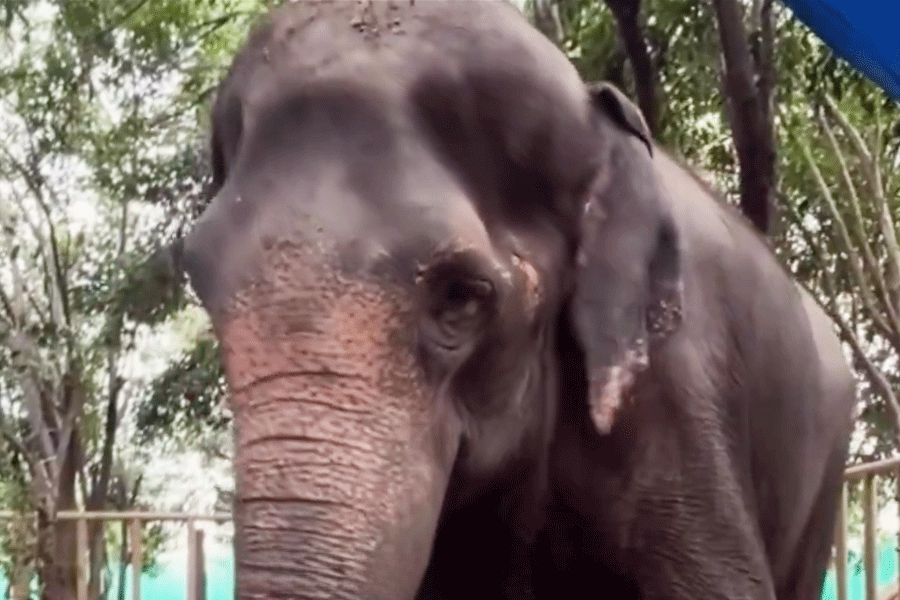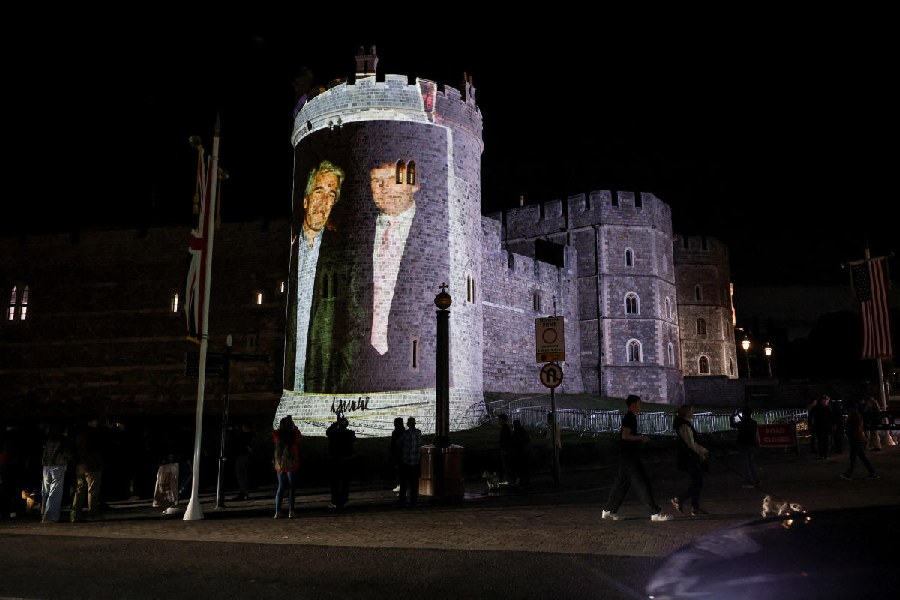-

-

Mihir Garh, the mud fort boutique hotel near Jodhpur, Rajasthan. Photo: Jagan Negi
It rises like a mirage in a scrubby desert. In Mali or Timbuktu, a mud fort built on a sand dune might not look so terribly out of place but in the middle of Rajasthan it's an unexpected and bewitching sight. This is Mihir Garh, a three-year-old mud fort that has attracted guests like Madonna who came with her children, nannies and bodyguards and amused herself by galloping through the surrounding countryside on Marwari ponies. 'Her visit was a challenge — she's a high-maintenance guest but after all she's a star,' recalls owner Sidharth Singh with a wry smile. More laidback travellers can lounge about by the shimmering blue infinity pool, gaze out at the wide open spaces and watch the glorious sunsets. Says Singh: 'This has been our dream project — it was a leap of faith. And we've been thrilled with the response.'
Cut to Kalwar on the outskirts of Jaipur. Its owner Lieutenant General Mandhata Singh retired in 2008 after a distinguished career in the Army and joined his son Randhir in the Herculean task of restoring Castle Kalwar, the family home for 16 generations that's nestled at the foot of a picturesque hillock. After sinking all his retirement savings into the project, the family finally threw open the doors of the castle two years ago and have already done a string of weddings and corporate events. Says Randhir: 'This place was totally in ruins. The electricians took two-and-a-half years to do the wiring and put up the internal fittings. Every inch of the property has been worked on.'
Back in the 1980s and '90s a handful of pioneer hoteliers realised that heritage would be a magnet for foreign tourists entranced by Rajasthan's medieval splendour. Now a new generation has figured out that hoteliering is the only game in town and they are calling in the carpenters, plumbers and architects to turn dilapidated, sprawling country homes and castles into boutique luxury resorts that ooze Rajput olde worlde charm.
And that's not all as the one-time Rajput chieftains embrace modernity with a vengeance. The older generation of noblemen-turned-hoteliers who spotted the opportunities early are now expanding to meet the demand and restoring unused wings of their homes and even outhouses. Others are becoming even more adventurous and building 'faux royal' castles and palaces and mud forts like Sidharth Singh.
-

The opulent Alsisar Mahal in Shekhawati is the jewel in the crown among the heritage properties owned by Col Gaj Singh.
'These homes were white elephants. Now we have learnt to ride them. Each and every family is into this business,' says Shiv Pratap Singh of Ravla Bhenswara, a heritage property about 120km from Jodhpur. Agrees Sidharth: 'Opening hotels is the only way we can afford to keep these large properties.'
Take a look at the Alsisar group, one of the biggest players in the heritage hotel business. Founder Colonel Gaj Singh was forced to abandon an army career after his father died. He returned to Jaipur in the early '90s and took the bold decision to turn his family home in Jaipur into a 12-room hotel. Today he presides over a chain of five heritage hotels and one that is managed for an NGO.
The jewel in the crown is the sprawling and opulent Alsisar Mahal in Shekhawati which has 51 rooms. 'My father added as we went along. We didn't have a pool to start with,' says Dhruv Singh, son of Col Gaj Singh. On an even more ambitious note, construction is about to start on a 100-room 'faux heritage' hotel in Amber.
Others are expanding on a smaller scale. At Bhainsrorgarh, a stunning fort perched on a cliff overlooking the Chambal River, Hemendra Singh and his brother and father, who run the property, opened four new rooms in time for the season which started last October. The fort now has nine rooms but its owners — who live in one wing — say they might go up to 20 rooms. 'There's enough space to expand as the property has some ruins that can be renovated,' says Hemendra.
-

Col Singh with his family; (from left) elder son Abhimanyu, daughter-in-law Sanyukta, wife Thakurani Manju Singh, Col Singh, younger son Dhruv
There are also other small-scale newcomers who are leaping into the heritage hotel game — and some aren't even in Rajasthan. Take Keshavendra Singh, who lives in regal splendour in the Chambal ravines, a long way from the usual well-beaten tourist track. Keshavendra's Fort Rampura is a sprawling 800-year-old fortress that's described on its website as a 'Ravine Retreat'.
Getting there's a bit of a trek as Fort Rampura's a two-hour drive from Etawah but guests get a pick-up in Rampura vehicles. The fort has just four guestrooms and Keshavendra who did his schooling in Ootacamund and who's a member of the Kachawaha clan, says it will be tough to expand unless they build a new wing. Says Keshavendra: 'The structure is 800-years-old and we can't tamper with it.' Guests can go boating on the nearby rivers or just hang about the Raj-style living quarters that have tiger skins and even a lamp made from an elephant's trunk on the walls.
Another newcomer who's hoping his ancestral home will turn into a steady earner is Anirudh Rathore at Fort Barli, which is a six-hour drive from Delhi. Fort Barli is another off-the-beaten-track destination but Anirudh, his wife and in-laws have teamed up to restore the place and offer 12 rooms to guests. Most of the visitors are foreigners, who are on long trips to India, and a few intrepid Indians who undertake the drive from Delhi. Says Anirudh: 'We've been getting guests for five years now and each year has been better.' He adds: 'We have a staff of 15 but just about everything is done by us.'
The fact is that the Rajput clans spread themselves over a huge area and built an astonishing range of castles, palaces and country homes. This means anyone who is interested in a heritage holiday can pick and choose from an extraordinary variety of places. So, Sidharth, not only offers his mud fort. He also has his Wilderness Camp, a set of luxury tents. Alternatively there's his own home, Rohet Garh, 40km from Jodhpur which — against all advice —he converted into a hotel about 20 years ago. Says Sidharth: 'At that time, tourism was in its infancy and this was an experiment. The mindset was why would anyone want to leave Jodhpur and come to a village. But they were entranced by village life — it was a chance to see the 'real India' and it was lapped up by foreigners.'
-

Sidharth Singh has hosted celebrity guests like Madonna at his mud fort, Mihir Garh
One of the first guests at Rohet Garh was writer Bruce Chatwin who stayed there to write a large part of his celebrated book The Songlines (Rohet Garh wasn't officially a hotel at the time). Another writer-in-residence later was William Dalyrmple who insisted on the same room and desk where Chatwin turned out his magnum opus.
Other holidaymakers who are looking for something entirely different and a place that's a quiet getaway could try Shahpura Bagh that's about four hours from Jodhpur and five from Jaipur. This sprawling and environmentally friendly property surrounded by two lakes is set on 45 acres. 'It's a working farm. We grow wheat and mustard. And we have fruit trees like mangoes and jamuns,' says former advertising photographer Shatrujeet, who tends the 10-room property along with his brother Jai Singh, a former ITC executive. 'It's not a palace, more a country home,' says Shatrujeet. He adds: 'India is an experience for many foreign tourists. They need a bit of a rest after so many sights and sounds and impressions.'
Another tranquil spot in a far-flung corner of Rajasthan, close to the Gujarat border, is the 27-room Udai Bilas Palace situated between a lake and a private forest. The combination of lake and forest make it a great spot for birdwatching. Says owner Harshvardhan Sinhji: 'It's as good as Bharatpur. You can see birds from the rooms. We keep it quiet and peaceful. There are no television sets and no phones.'
In the hotel itself, there's art deco wallpaper and d�cor. And the Dungarpur Mews which has scores of old cars, carriages, guns and even the replica of an ancient warplane, has been turned into a museum. Says Sinhji: 'We're running it all ourselves and that even includes planting the garden.'
-

-

Fort Rampura (top and above) is a sprawling 800-year-old fortress in the Chambal ravines of Uttar Pradesh
It isn't just the heritage Rajput features and the Art Deco furniture that give these heritage hotels their charm. The essence and key to these heritage hotels is, of course, that they are family-run establishments with one-time jagirdars and noblemen — whose families have mostly lived on the property for 200 to 300 years or even more — laying out the red carpet for guests.
Even at the large Alsisar group, for instance, the eldest brother Abhimanyu Singh handles operations and bases himself at Alsisar Mahal in Shekhawati. His wife, Sanyukta, meanwhile, looks after housekeeping. Youngest brother Dhruv, who graduated in business management is in charge of finance. Says Dhruv: 'We make sure we talk to every guest who stays with us. A lot of guests have told me that it makes all the difference to speak to the owner.'
Or, look at the smaller Ravla Bhenswara. Says Shiv Pratap Singh: 'My wife and I are totally stationed here. She looks after indoor activities and I do safaris.'
It's the same story at all the other heritage hotels too. The Karni group, for instance, were one of the earliest players in hoteliering and now have 75 rooms (including some luxury tents) spread over three locations. Vikramaditya Singh Sodawas and his father look after finance, marketing and sales for the entire group between them. Vikramaditya's uncle and aunt are the general manager and administrative housekeeper respectively at Karni Fort and a paternal aunt is the administrative housekeeper at Karni Bhavan.
-

The owners of Bhainsrorgarh, perched on a cliff overlooking the Chambal river, have just built four new rooms and are looking at further expansion
Vikramaditya himself goes to great lengths to ensure each guest gets personal attention and makes it a point to be in the dining room at Karni Bhavan for breakfast and in the evening. Says Sodawas: 'We have to have a family touch in all our hotels.'
Adds Hemendra Singh of Bhainsrorgarh: 'The plus point in these properties is you get to interact with the host.' Though he adds a cautionary note: 'We have to gauge who wants to spend time with us.'
The owners also pitch in to supervise all the activities. Hemendra Singh and his brother take guests on sunset safari drives to Bhil villages surrounding the properties. Other activities on offer at Bhainsrorgarh include boat safaris on the Chambal River and picnics on an island in the river. On a different note, there are visits to the cenotaphs of the Bhainsrorgarh family's ancestors.
Similarly, at Udai Bilas, guests are taken around to nearby Bhil villages and also to the abandoned Juna Mahal, a seven-storey palace owned by the family, parts of which date back to the 13th century. And birdwatchers can head out for trips to wildlife sanctuaries.
At Ravla Bhenswara there are other attractions in the form of the estate's automobile collection. There are about 25 vehicles and Shiv Pratap Singh has plans to turn the collection into a rural automobile museum — but even today guests can get hands-on experience on the vehicles. Says Shiv Pratap: 'I allow people who stay for two days to drive the cars.'
-

-

Guests get personal attention at Karni group hotels like Karni Fort Bambora (top and above)
Who are the guests who travel great distances in search of heritage experiences? Inevitably, foreigners have provided the bread, butter and jam for most of these establishments. They come from different corners of Britain, continental Europe, North America and more recently Australia and New Zealand — depending on where that particular hotel has been marketing the most energetically. But common bond that unites the guests is that they are usually 'India veterans' who've been there, and done that in the sub-continent. Also, they are on long holidays and can afford to take a long detour off the beaten track to some of these resorts. Says Hemendra: 'Our guests are often experienced travellers who have done India several times. Offbeat destinations are usually for people who have done it all.'
But Indian travellers too are now showing a greater taste for heritage vacations. At Karni, Sodawas says 35 per cent of its guests last year were Indians. Says Sodawas: 'This year I targeted the domestic market heavily. People's disposable income has gone up steeply.'
There have been tough times of course. Tourism is an extremely volatile business, affected by the slightest political shifts. The years after 9/11 were shaky ones as foreign tourists opted to stay at home.
But in many ways it's extraordinary how these old families have shown great resilience and initiative and taken to the 24-hour toil of hoteliering. Keep in mind that Sidharth's family, for instance, arrived in the area around Rohet Garh far back in 1622. And Mandhata Singh tells the tale handed down over generations of how his ancestors were agitating for a jagir in the 1720s and were told to drive out the people holding the region around Kalwar and take it over themselves. Today, many of the younger generation of these families are looking ahead and doing courses in hotel management.
-

Lt Gen Mandhata Singh (sitting, second from right) and his son Randhir (standing, left) spent two-and-a-half years restoring their home, Castle Kalwar that's been in the family for 16 generations. Photo: Jagan Negi
Sidharth Singh is sanguine about the prospects for the future. He says: 'Running it efficiently is the challenge, and running it consistently. Today Rajasthan has really developed into a great destination.'
-

-

Guests who stay for over two days at Ravla Bhenswara (top and above) can drive around the estate in vintage automobiles from the hotel's collection











